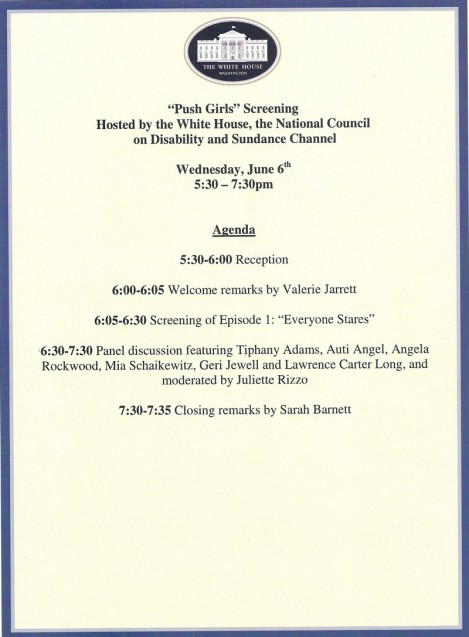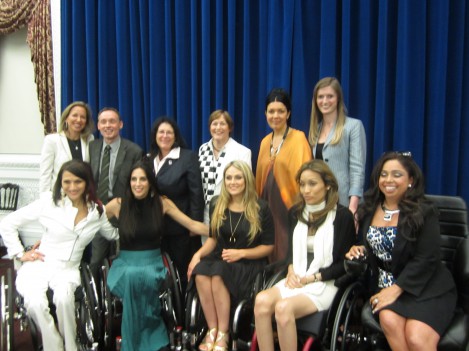The White House screening was attending by high-ranking government appointees with disabilities, allies from the LGBT community, corporate allies and grass-roots disability leaders. Post-screening blogs were generated by John Robinson (Our Ability), James Weissman (United Spinal Association) and Gary Karp (Modern Disability), to name a few.
PUSH GIRLS was embraced by the disability community, received glowing reviews by thought leaders, and raised national dialogue on disability and sexuality, intimacy, community-based independent living, career choices, family relationships, parenting.
EIN SOF social media team took the story arc of each Push Girl and created daily Facebook postings and Twitter feeds, driving traffic with disability-savvy messaging that created a cross-over audience, and drove Facebook likes from 2,000 to 50,000. The show received critical acclaim in both disability and mainstream audiences and was renewed for a second season.
At least one woman who acquired a spinal cord injury during 4th of July weekend 2012, one month after the launch, had a PUSH GIRL frame of reference during her rehab. This new paradigm of “Disability Power & Pride” shattered the traditional myth of people with disabilities as broken and weak. She is a “Push Girl,” as are millions of men, women and children with (and without) disabilities, as they power through life, not internalizing disability myths and lowered expectations, but taking it for the social construct that it is: barriers created at the intersection of the built, electronic and attitudinal environment.
Push Girl Angela Rockwood was also profiled in the DOL What’s Your Connection? disability awareness campaign, click here.

